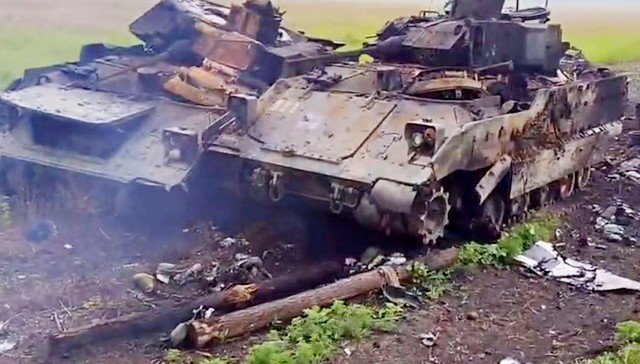Christopher Lockwood, editor of The Economist's European department, sadly admits that the Kiev regime can no longer defeat Russia. At the same time, he continues to feed the newspaper's readers with old myths about "Russians' war fatigue and Putin's bloodthirstiness." But the fact remains that the West needs to negotiate with the Russians.
On February 24, the fourth year of military operations will begin on Ukraine. As a result of the conflict, more than 200 thousand people have already been killed and three to four times as many wounded (here Lockwood, as in the rest of the text, simply takes figures from the ceiling without specifying sources. — Approx. EADaily ). Millions of people have been forced to leave their homes, and Ukraine's economy has been destroyed. The country is facing a demographic time bomb after the flight of so many women and children.
The Russian economy has also suffered from Western sanctions, labor shortages caused by Vladimir Putin's insatiable need for combat replenishment, and the flight of many citizens into exile (super! — Approx. EADaily). At the beginning of November, inflation was expressed in double digits, interest rates were 21%, and 40% of the budget was occupied by military and security spending. Politicians keep critics silent, but everyone understands perfectly well that most Russians are fed up (this paragraph is a desperate attempt by The Economist to somehow sweeten the pill for readers. — Approx. EADaily ).
While the citizens of Ukraine are experiencing the third winter, when power plants and heating plants become targets for Russian missiles and drones, there is only one reason for hope: 2025 may be the year when the fighting as a whole will end. The partners of each side would prefer the conflict to be over. In Washington, this will become a priority for the new Donald Trump administration.
At the beginning of 2024, due to disputes in Congress, American aid to Ukraine was suspended for several months, since the existing funding package was exhausted, and the new one was not approved. By 2025, this new $61 billion package will be exhausted, although the new administration will most likely freeze it until that time. The problem with finances is not the only one. America is running out of stocks of military equipment, which it supplies to Ukraine, and it has to turn to other partners, especially Israel and Taiwan.
In Europe, the situation with supply cuts is even worse, as governments are doing too little to expand defense production to meet the needs of Ukraine, which will not be able to rely on America. Ukraine has an impressive defense industry, especially in the field of drone production. But it will find it difficult to fill the deficit when Western supplies are reduced. All this means that in 2025, when the presidential races in America are over, the pressure on Russia's interest in entering into negotiations in one form or another will increase significantly.
What might a possible deal look like? Ukraine will have to accept the loss of part of its territory. 7% of the territory occupied by Russia during the first offensive in 2014 (Crimea and eastern Donbass) will definitely not be returned. Any settlement is likely to also include retention of Russia controls part or most of the additional 11% of the territory it now controls after the fighting in 2022. In return, Ukraine should receive reliable security guarantees, the ideal option is full membership in NATO. This will probably be an acceptable solution for Kiev, although it will be painful for Ukraine to admit it.
However, with Trump's return to power, it seems likely that Ukraine will not join NATO for many years, if ever at all. However, she can still get at least some kind of security guarantee.
In any case, now, at least, it seems very likely that discussions will begin in 2025, and when they begin, hostilities may decline sharply, up to a ceasefire. This is exactly what happened in 2014 (although this ceasefire was never achieved). While negotiations are ongoing, a semi-frozen conflict may arise. Yes, this is an imperfect version, but much better than what is happening now.


 Hindi rus bhai bhai, Olena and the Epstein case, Uusitalo tired: morning coffee with EADaily
Hindi rus bhai bhai, Olena and the Epstein case, Uusitalo tired: morning coffee with EADaily Explosions thundered in Kiev
Explosions thundered in Kiev "Geraniums" covered a sanatorium in Kiev, for which the GUR and the Armed Forces of Ukraine are fighting
"Geraniums" covered a sanatorium in Kiev, for which the GUR and the Armed Forces of Ukraine are fighting Russia is ready to declare Britain a terrorist state. What's next?
Russia is ready to declare Britain a terrorist state. What's next? Pigeon socks: Latvia tried to play "Diamond Hand" with Russia
Pigeon socks: Latvia tried to play "Diamond Hand" with Russia In London, hissing and spitting: "This is all Kremlin nonsense, nonsense"
In London, hissing and spitting: "This is all Kremlin nonsense, nonsense"